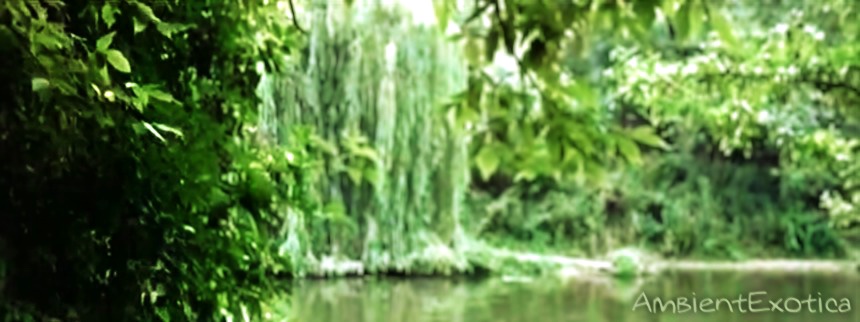
Piero Umiliani
La Ragazza Dalla
Pelle Di Luna
1972
Betrayal in Paradise
Recorded in 1965 already, but not released until 1972 on his own label Omicron Records, La Ragazza Dalla Pelle Di Luna is a 14-track LP by famous film musician and library archivist Piero Umiliani (1926–2001) that belongs to the former category of his works and consequentially underlines the eponymous romantic drama directed by Luigi Scattini. Time has all but forgotten this movie, but it is available on YouTube and quite the costly production no less. The plot is business as ususal, but eminently important for the tone of the soundtrack, so it shouldn’t be elbowed away in this context: engineer Alberto and posh magazine photographer Helen (Zeudi Araya’s film debut) see their marriage in crisis, with only one possible solution, and that is a vacation on the Seychelles where they almost immediately betray each other. Therefore, paradise and purgatory, yearning and ecstasy are closely tied to one another throughout the soundtrack which features choirs, guitars, strings and electronic devices. If you adore Piero Piccioni’s soundtrack to Bora Bora (1967), chances are that you will like La Ragazza Dalla Pelle Di Luna as well. Here is a closer look at its ambivalent aureoles.
Shared lonesomeness, drenched in exoticism
This section may be the most consequential one to begin the covering of the material with, as it is about the weirdly touching lack of cenobitism and togetherness that unfolds within the few vocal-underlined songs. Featuring the Choro Di Sandro Alessandroni, these few instances show the cinematic craftsmanship of Piero Umiliani that is embroidered in the sound waves. This is not always the case when his quirkier or rather abstract library music gemstones are considered; Bon Voyage!!! (1975) and Musica Dell’Era Tecnologica (1972) come to mind in particular, but sound-based pop art and proto-Glitch are to be expected few and far between as well. But back to La Ragazza Dalla Pelle Di Luna: the opener Pelle Di Luna is a prime example of melancholy and cautious hopes to leave the crisis of one’s life behind. In this here case, it is just a failed marriage, but it’s one of the existential turnarounds the Occidental viewpoint can relate to in particular. While the choir is humming, the bongos are drenched with oceanic sunlight. The acoustic guitar offers glints of hope, whereas the small string ensemble serves as the biomorphic veil, especially so with the aid of the alkaliphilic three-note glissando that almost crosses the boundary to ethereality. Then there’s Addio All’Isola Felice which further augments the dualism with the lead enchantress oscillating around gyring string washes, with Un’Isola Felice amplifying the loneliness by means of less instruments: just the quasi-whispering coquette over a warped steel guitar and an electric piano, with Umiliani’s theme eminently recognizable.
Mysticism, clandestinity and synthetic strings
This is probably the element to cherish in Piero Umiliani’s works if you’re able to find it. Not that it would be difficult or next to impossible, no, but his library music is especially varied and an electropositive sunburst could immediately be followed by the spherification of an eldritch sacrifice; the superb Polinesia (1975) comes to mind. In La Ragazza Dalla Pelle Di Luna, mountainous fog-filled dioramas are admittedly de trop, but surrealism takes over nonetheless when there’s a chance. The theme of Tanto Tempo Fa appears twice on the album and isn’t the best example in this regard, but approaches the subject of enigmatic epithelia from a sun-kissed angular viewpoint: the first arrangement sees pianist Franco D’Andrea deliver his chords in front of a dreamily unreal cascade of solo string-based magnetotails and a snake charmer Hammond organ. The second arrangement meanwhile features a matutinal trumpet as played by Oscar Valdambrini becomes entangled with the galactosamines of an electric piano and a similarly electric bass chloroderivative. There’s no glitters or spirals, the song is carefully jazzy, and yet do these pectiniform frequencies emanate both petrifying awe and a lacustrine flow at the same time. These two instances come closest to the veil of mysticism.
Proto-Vaporwave And Zoetropic Ecomorphs
The fun part of Piero Umiliani’s music – to me at least – is the kaleidoscopic array of various textures, sounds and sequences, i.e. the very ingredients that usually prevent an album from being perceived as such and rather cause raised brows and the mumbled remark about the famous mixed bag. Once you know that you are listening to a composer who is also known for his vast archive of library music, you might as well enjoy the diffeomorphism, and this here album doesn’t differ at all. La Ragazza Dalla Pelle Di Luna inherits a certain gravitas and staggering ponderousness despite being a film forgotten in time, but there are elements of joy and rich funkiness in here. In a weird turn of events, it might be these features that invoke surrealism and otherworldly experiences, not the lachrymose poignancy of the more contemplative arrangements. Such being the case, you can bask in Mahè, a swinging Jazz piece featuring the movie’s main theme in a Brazilian setting, with electric sparks and sizzling maracas shaking the atoms of avolition. Ricardandoti then sees the same theme brought into the elevator; lift muzak par excellence and with molten lava Hammond organs, it is probably the gelid electric piano and the similar texture of the electric guitar that make this the glacial photodissociation of the album. These are again but two examples, although you encounter rhythmic riots and contrapuntal chords aplenty in this setting no less.
Paradise Lost, Business As Usual
Alas, that’s always the case, right? You can’t win, Exotica and escapism are always intertwined, but why the escape if your existence and belongings aren’t blissfully in order? This is not a question that is answered by La Ragazza Dalla Pelle Di Luna, probably because it isn’t addressed in the first place. However, the original soundtrack does contain the lament from start to finish. Basically one big remix album if you will, even its most wonderful moments and exogenous beauty cannot cover the crisis of being alive. This is perfectly alright though, as this is a film score after all. The recurrent theme doesn’t go on any Exotica listener’s nerves, I presume, but it surely plasticizes the good mood and lets us ponder. Make no mistake though: Piero Umiliani has created a tropical/insular gem, it’s just that it is – probably controversially – more mature and reflective due to the given circumstances. And as luck has it, it has been reissued in a deluxe edition despite the film’s forgettable stature: a whopping 26 tracks find their way onto the CD released in 1999 on the Easy Tempo label. The amount seems like overkill, but many rhythmic and electronic tracks from the film are now featured for the first time on the soundtrack too. Expect ever-more renditions and iterations of the theme, many of them delightful, others as polyvalent as can be.
Exotica Review 496: Piero Umiliani – La Ragazza Dalla Pelle Di Luna (1972). Originally published on Jun. 25, 2018 at AmbientExotica.com.
